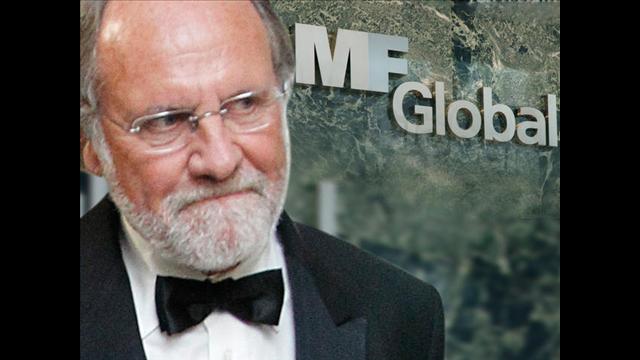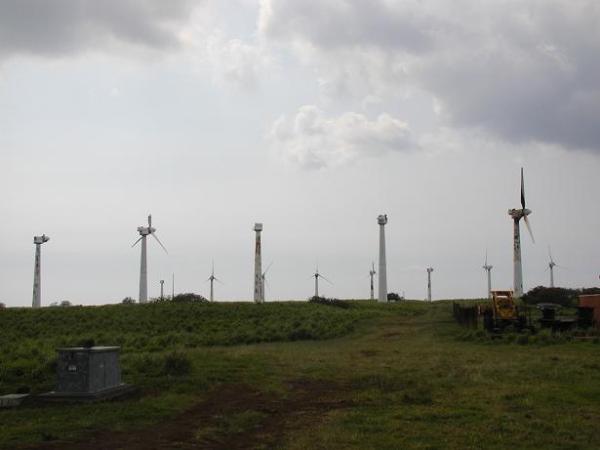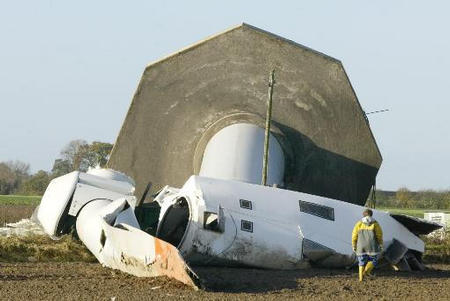The second-biggest structure in human history will seek to answer deep cosmic mysteries

KM3NeT Artist's Concept A possible configuration of the KM3NeT detector network. Marco Kraan/Property KM3NeT Consortium
Neutrinos may or may not move faster than light, but regardless, they're special little things. They speed through the planet, and through you, and through everything; but, chargeless and puny, they interact with their surroundings so minimally that other particles hardly take notice.
These subatomic particles are so tiny and so imperturbable they’re almost impossible to see, but they originate in some of the most violent and disruptive processes in the universe. Energetic neutrinos that originate in deep space, known as astrophysical neutrinos, escape from the dark centers of the universe’s most powerful places — gamma ray bursts, blazars and quasars, and black holes at the centers of galaxies. They can serve as cosmic messengers from these tumultuous places, but first we have to find them, and this is excruciatingly difficult. So European scientists are planning to construct the second-largest structure ever built by humanity, just to look for them.
Click to launch the photo gallery
Nestled beneath 3,200 feet of Mediterranean seawater, a neutrino detector called KM3NeT will stare at the seafloor in an effort to see neutrinos making their way through the Earth. The detector, spanning three cubic kilometers, will also serve as a new oceanography observatory in one of the world’s busiest bodies of water, helping biologists listen to whales and study bioluminescent organisms. It will be the largest structure ever made by humans after the Great Wall of China, said physicist Giorgio Riccobene, a staff researcher at the National Institute for Nuclear Physics who is working on the project. “The problem will be that nobody will see that,” he said with a laugh.
The goal is to find astrophysical neutrinos originating in cosmic cataclysms, Riccobene said. They could help explain the origin of cosmic rays, the proton flux that rains down on the Earth from unknown sources. To get past the magnetic fields provided by our galaxy, sun, and Earth itself, these cosmic rays must be incredibly powerful, but cosmic rays don’t point back to their sources the way light would. Neutrinos can help reconstruct their paths.
“At these energies,” Riccobene said, “the only high energy particles that can come from very distant sources are neutrinos. So by looking at them, we can probe the far and violent universe.”
The enormous detector required to do this is a pan-European effort, including 40 institutes or university groups from 10 countries, from the UK to Romania. On Nov. 24, the Italian Ministry of Research approved €20.8 million ($27.7 million) for the first part of the detector, comprising 30 underwater towers equipped with 37,200 photomultiplier modules. These little digital cameras will catch the telltale flashes that herald a neutrino’s arrival.
THE NATURE OF NEUTRINOS
Much of the general public probably had never heard the word “neutrino” until the still-controversial
faster-than-light claims made by a separate group of Italian physicists made news this fall. The supposedly speedy neutrinos glimpsed by the OPERA experiment were created in a beam of protons, and hurled underneath the Alps from Geneva to Gran Sasso, an Italian mountain that sits atop a physics lab. The neutrinos in that experiment were being monitored for signs of oscillation, one of the many bizarre behaviors that make neutrinos interesting. (The faster-than-light finding was, and remains, a total surprise.)
By looking at neutrinos on Earth, physicists can probe the far and violent universe. Neutrinos are formed in certain types of radioactive decay, including in the sun, in nuclear reactors, and in the collisions between cosmic rays and other objects. There are three varieties, known as flavors, according to the Standard Model of particles and forces: an electron neutrino, a tau neutrino and a muon neutrino. Neutrinos can change among these three flavors, a strange phenomenon that has been
tapped in Japan and the U.S. to investigate why the universe is made of something rather than nothing.
They are neutral — hence the name, coined by Enrico Fermi, which means “little neutral one” in Italian — which means they can move through the rest of reality pretty much unimpeded. Here’s an example, courtesy of Peter Fisher, a particle physicist at the Massachusetts Institute of Technology: Shoot a high-energy electron through a piece of metal, say three centimeters thick, and it will interact with other particles in the atoms of the metal. It will lose lots of energy in these collisions, resulting in other subatomic particles that can then be detected.
“For a neutrino with the same energy, you would need something like a light-year of heavy metal, because the interaction strength of the neutrino is so much smaller,” Fisher said. “Anytime you detect a particle, what you’re always doing is having the particle interact with some kind of matter, whether it’s water, steel, air, ice. The less the particle interacts, the more material you need for it to interact in.”
Instead of a light-year-sized piece of metal, KM3NeT will use the ocean. Here’s how it will work: Somewhere across the universe, one of the most powerful forces in the cosmos cleaves subatomic particles into their component parts, yielding super-energetic neutrinos. By chance, a few of these particles might travel to our galaxy and make their way to Earth, where they could provoke a response in a charged particle. Think of it like a game of billiards, explains Riccobene.

First Neutrino Observation: The world's first neutrino observation in a hydrogen bubble chamber was found Nov. 13, 1970. The invisible neutrino strikes a proton, where three particle tracks originate (right). The neutrino turns into a muon, the long center track. The short track is the proton. The third track is a pi-meson created by the collision. Argonne National Laboratory
“The neutrino is the shot that breaks the ‘castle,’ the group of billiard balls that form the nucleus of an atom. When it breaks this castle, there is a possibility that an outgoing particle can be produced,” he said. If it is a muon — a charged subatomic bit, a much larger cousin to the electron — this is good news. The muon formation radiates a cone of blue light, known as Cherenkov radiation. If physicists are lucky, that flash will happen in a clear and deep medium, like Antarctic ice or the depths of the Mediterranean. “This is the light we look for, to reconstruct the trajectory of the muon,” Riccobene said. “So in this sense, it is an underwater telescope. The water allows us to see the reaction more clearly.”
By looking down through the Earth, the detector minimizes the odds of finding a stray atmospheric neutrino instead. Along with serving as the detecting medium, thousands of feet of seawater act as a secondary particle shield.
A THREE-KILOMETER NET
The technology enabling these light observations is, unsurprisingly, pretty complex. The optical sensors that detect those blue flashes are called photomultiplier tubes, and each can register the electronic signal created by a single photon. In previous detectors, including
IceCube and precursors like Antares and AMANDA, the photomultipliers were monodimensional and mounted on strings. KM3NeT will put them into spherical pressure vessels called digital optical modules, which will then be mounted to underwater towers.
“This will improve the resolution and the tracking,” Riccobene said. “With a single large-area phototube, you miss the arrival direction information, but with several small-sized tubes, you know the direction.”
The tower network still has several possible configurations, but the entire thing will cover a volume of several cubic kilometers, which explains the name KM3NeT, for kilometer-cubed neutrino telescope. The towers themselves will be more than 800 meters (2,624 feet) tall — at present, which is still in planning stages, they're slated to be taller than the 2,723-foot Burj Khalifa tower in Dubai.

Photomultiplier Tube With Connectors: Property KM3NeT Consortium
The optical modules will be built to withstand six atmospheres of pressure, roughly equivalent to 20,000 feet below the surface of the sea. Each 17-inch sphere will hold 31 3-inch photomultiplier tubes, each of which is surrounded by a light concentrator ring to further increase the light collection area. The DOM will also contain calibration sensors like acoustic piezo sensors, compass and tilt meters and a nanobeacon. They’ll be mounted onto 20-foot-long bars, and 40 bars will be connected to each detection unit. The detector will look like a series of undersea towers, Riccobene said. There will be about 100 units per cubic kilometer of water. The whole network is connected via central stainless steel tubes, which will contain optical fibers to link the detector to shore stations several miles away.
KM3NeT is designed to be more sensitive than IceCube, at least in its ability to detect atmospheric neutrinos, which is something physicists can actually test. But as far as astrophysical neutrinos, no one knows what its resolution will be.
“Nobody has seen them,” Riccobene said. “What we expect is that we can detect something like 3,000 muons per second for atmospheric muons, but for astrophysical ones, it’s still a guess.” The photomultiplier modules are already being built, and several have already been deployed in various test phases as engineers continue planning, Riccobene said. As of now, the detector’s final design is still uncertain, because funding from several European research institutions is uncertain too. There are a couple options, including the huge detector, five times larger than IceCube, or splitting it up into three detectors at three different sites. KM3NeT could even work in concert with existing detectors, including a smaller European detector called Antares.
It is by far the largest, but KM3NeT is also just the latest in a long line of super-big and super-sensitive detectors. The IceCube detector, its closest kin, was completed less than a year ago, and its first year of data at full-strength observing capacity won’t even be available for six more months. Researchers have seen plenty of atmospheric neutrinos, generated above the Earth, but no astrophysical ones — at least not yet, said IceCube spokesman Greg Sullivan, a professor and associate chair in the physics department at the University of Maryland.
“We have set some limits that are interesting, and have started to rule out some of the models,” he said. “There are some parameters that theorists don’t know yet.”
IceCube and KM3NeT are similar in many ways — both use the Earth as a filter to block out background radiation and find neutrinos, and both use a deep, dense medium to hunt for Cherenkov light. But they look in different parts of the sky — IceCube looks at the northern sky, and KM3NeT to the south, incidentally the direction of the galactic center as seen from this planet. IceCube is also a lot smaller, one cubic kilometer to KM3NeT’s three, Sullivan said.
“This idea for a large neutrino telescope is many decades old, and [physicists] always thought it would be easiest to do it in deep water. It turned out to be relatively inexpensive and efficient to do it at the South Pole because of existing infrastructure,” he said.
When you're looking for something like a neutrino, you need as much volume of space as possible.But when you are looking for something with such a low flux, you need as much volume as possible, so IceCube may not be big enough. When KM3NeT was first envisioned, physicists considered making another observatory the size of IceCube, but early results — or the lack thereof — spurred them to make it bigger, Riccobene said. KM3NeT will be more powerful than IceCube by a factor of two or three, he said.
Not everyone agrees this is the right strategy, however. Fisher, at MIT, wonders how big will be considered big enough before physicists start thinking about other reasons why they can’t seem to find astrophysical neutrinos.
“There’s a segment of the physics community who make the argument, these are particles with a higher energy you could ever hope to produce in an accelerator, which is true. And they may tell us something different about the cosmos, that’s true. But it’s all ‘could be.’ And I haven’t seen anything from any of these experiments that tells us anything that’s new,” he said. “The way I’d look at it is, if you saw something, if there was some interesting new particle produced at the Large Hadron Collider, and you knew something about its properties, then you would know what to look for and what kind of detector to build. But just building bigger and bigger hasn’t worked so far.”
KM3NeT collaborators are still working on algorithms that will improve their odds, including pattern-recognition processes and optical module error rates.
COMPLEX PHYSICS DRIVES NEW COLLABORATIONS
At the very least, while attempting to understand the complex interactions between ultra-powerful subatomic particles, these enormous observatories have some added benefits for other scientists, too. To better understand their detector — the ocean — KM3NeT scientists are working with oceanographers, Riccobene said.
“The sea is our detector, and we have to know how our detector works,” he said. “One of the main problems is deep sea luminescence by bacteria, which could impact our photomultiplier tubes. We will need a biologist to say what is the expected range, what is the correlation with currents, and so on. On the other hand, it is very sensitive instrumentation, and these photomultiplier tubes could help them to discover new things in the deep sea.”
The optical modules will also have hydrophones, which oceanographers will be able to use to listen for whale songs.
The IceCube team has been working with researchers studying ice cores, Sullivan said. Dust grains embedded in Antarctic ice can provide a 100,000-year record of volcanic activity, and these core samples are as useful to glaciologists as they are to the physicists who drilled them to insert some cameras.
The KM3NeT consortium released a major technical report last winter that details the options for detector configurations, and most of the technological hurdles have already been worked out. At this point, building this gargantuan structure is a matter of funding and European geopolitics. One of the major collaborators is based in Greece, for instance, which has been hammered by the global financial crisis. Riccobene said there are still several options and he believes the project will continue to move forward. With the Italian section funded, preliminary construction could start sometime next year.
There will be plenty to look for, if KM3NeT does achieve its planned energy-range resolution from a few hundred giga-electronvolts to about several billion tera-electronvolts. At those ranges, physicists may be able to look for exotic particles like monopoles or dark matter candidates. But the main goal will still be astrophysical neutrinos, the most common — and yet some of the most unique — particles in the universe.






 390 Comments
390 Comments 












![eroszondoffice[1]](http://wattsupwiththat.files.wordpress.com/2011/03/eroszondoffice1.jpg?w=640)





![u1qwuHzJxmroka4wBmxcTa[1]](http://wattsupwiththat.files.wordpress.com/2011/03/u1qwuhzjxmroka4wbmxcta1.jpg?w=640)










